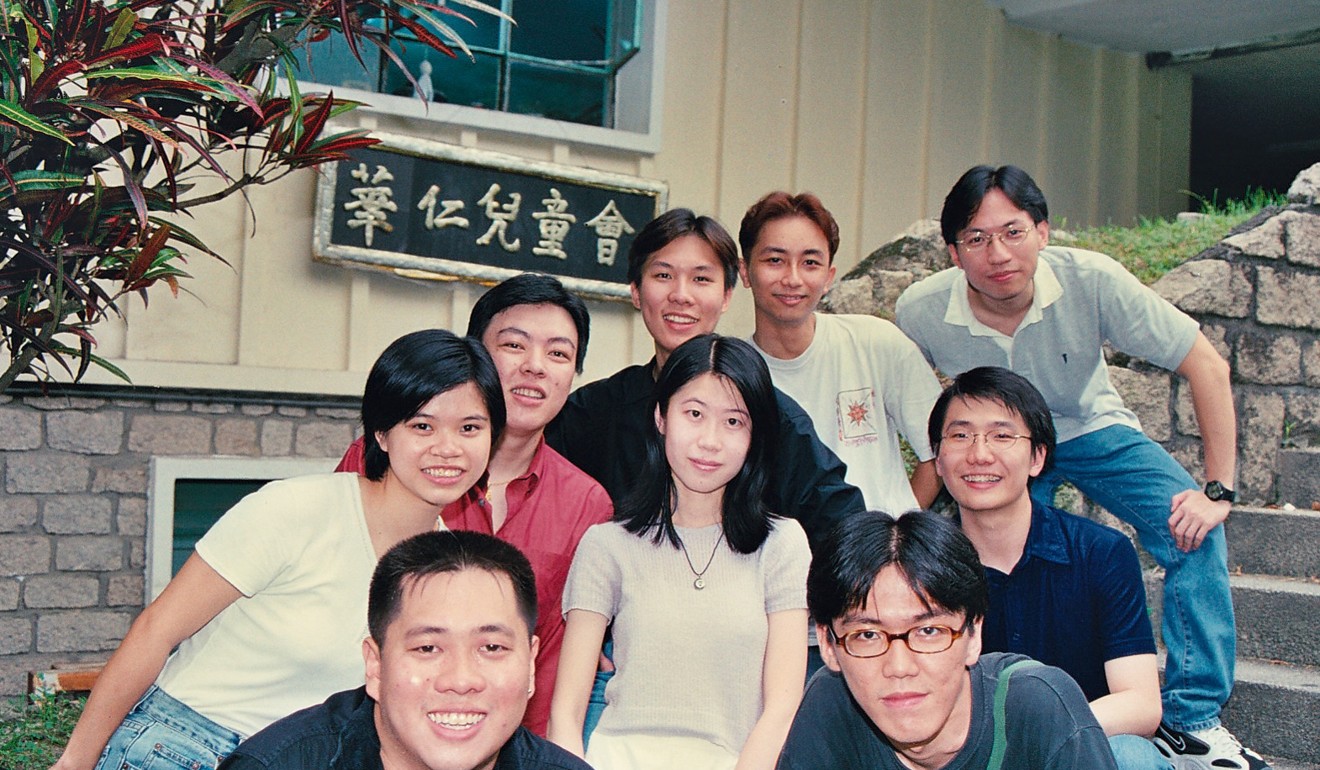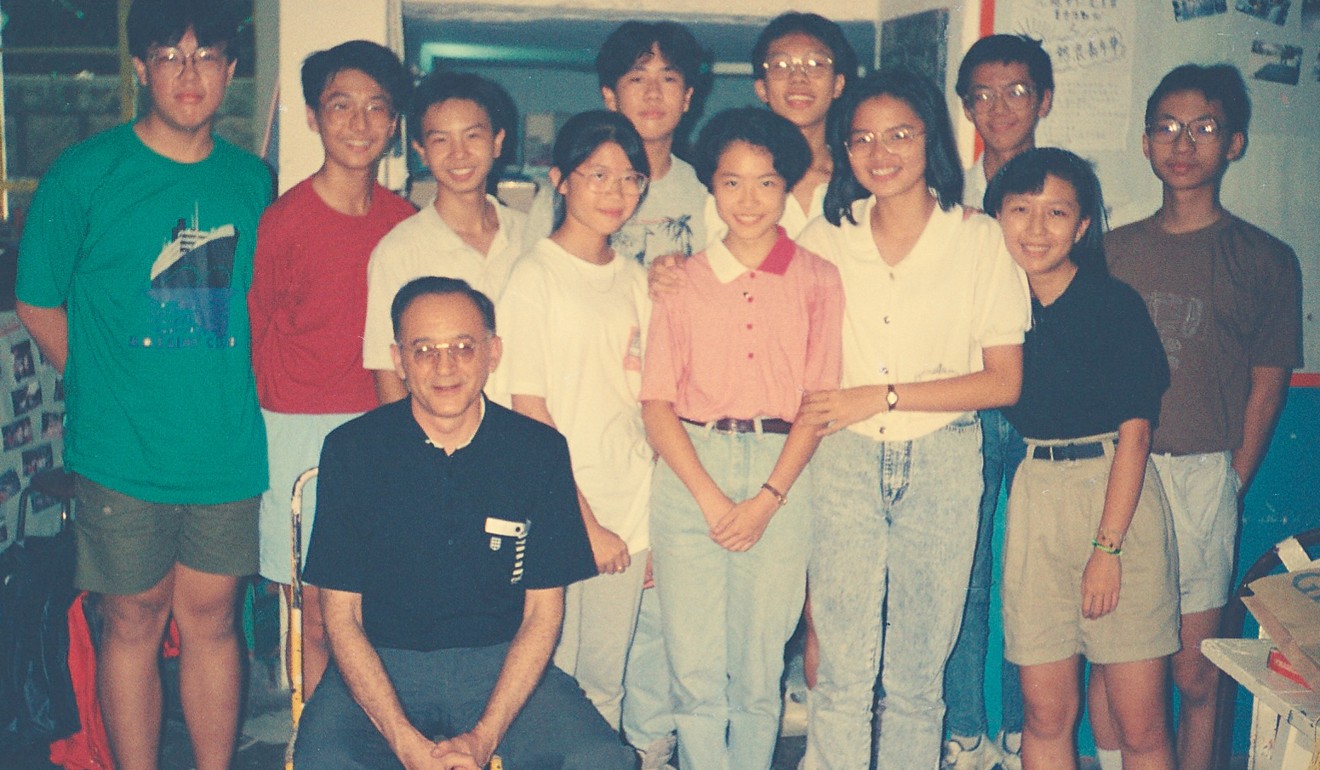
Death of Father Harold Naylor sparks recollection of Wah Yan Children’s Club legacy, which ran on ‘fun without funds’
- The club was a forerunner in the provision of youth services at the time, and started by taking in boys on the streets, later expanding to accept girls
- Members credit it for providing them with a safe haven from a life of vice and violence
Jessie Fung Ling believes she would have ended up as a runaway mingling with teenage gangs like some other girls in her school if she had not joined the Wah Yan Children’s Club in 1992 when she was 10.
Fung was one of about 3,000 children given a safe haven from gambling, gang fights and juvenile delinquency in neighbouring areas Yau Ma Tei and Mong Kok.
The club – which was set up in 1954 and ran until 1998 – offered tutorial classes, games and activities for children who lived in rundown buildings or subdivided flats in nearby districts.

Fung, from a low-income family, came under the healthy influence of the club and went on to Diocesan Girls’ School, a prestigious secondary school in Jordan. She became a leader of the club in 1994 to guide new members and now works in financial services after graduating from Queensland University of Technology in Australia.
The history of the club, which operated in a room under the school canteen of Wah Yan College (Kowloon) in Yau Ma Tei, came to light again after the death of Irish Jesuit Father Harold Naylor, who ran the establishment for more than a quarter of a century.

The priest, who came to Hong Kong in 1960 and taught at the college from 1967, died on October 4 at the age of 87.
The origin of Wah Yan Children’s Club dates as far back as 1946, when fellow Irish Jesuit Father Joe Howatson founded the shoeshine boys’ club at the Hong Kong Island counterpart of Wah Yan College (Kowloon). The club took in street children and shoeshine boys. Howatson became chairman of the Boys and Girls Clubs’ Association of Hong Kong in 1952.
In 1954, Wah Yan Poor Boys’ Club was started at the Wah Yan College in Kowloon. At the time, the families of the club members were living under stairs or on rooftops. By 1969, Naylor took over from fellow Irish Jesuit Father Joseph Mallin.
In the 1950s and 1960s, student leaders who helped out at the club cooked noodles for poor children and offered tutorial classes.

The club was in 1972 renamed the Wah Yan Children’s Club and welcomed female members and tutors. Its members were aged between eight and 12.
Billy Wong Ho-lung, a school alumnus who graduated in 1992 and served as a student leader at the club, said the decision top take in girls was made by student leaders when Naylor returned to Ireland for four months in 1972.
“Father Naylor was unhappy with the decision to recruit girls, probably out of his concern that Wah Yan College has been a boys’ school. But he later recognised the need to keep abreast of changes in Hong Kong society and was happy to see the extension of services to cover girls,” Wong said.
Queenie Law Yuen-fan, who joined the club as a student leader in 1978, said they often visited families of club members at the time.

“Nearly 40 years on, I still remember 10 members of a family slept on a bed and their bedclothes were very dirty,” she said. “When we took club members to summer camp in Cheung Chau, many of them took the first bus and ferry rides of their lives.”
When we took club members to summer camp in Cheung Chau, many of them took the first bus and ferry rides of their lives
Law said the club was a forerunner in the provision of youth services at the time, adding that similar services offered by NGOs only became commonplace in the mid-1980s. Wong said the club was by no means resourceful but Naylor taught them a simple creed: fun without funds.
“We applied for funding from district councils to finance activities, which was not an easy task for junior secondary students like us.”
Ernest Wong Hei-shing, a school alumnus who graduated in 1981 and served as a student leader in the late 1970s, said they learned the need to recycle materials when they organised activities.
“We made makeshift Christmas trees from unused papers and cardboard boxes,” Wong said. “Our activities made a lot of joyful memories for club members.”
But starting from the early 1990s, the club became less appealing given the rise in the number of youth services provided by NGOs.
The final chapter came in August 1998 when the school took back the room occupied by the club to convert it into a function room for information technology. A parents’ day, the last programme of the club’s summer project of the year, was held on August 22, 1998, the last day of the club’s operation.
Yet Naylor’s teachings are always on the mind of members and student leaders.
“I hope the club taught us a democratic lifestyle of shared responsibility and leadership in service of others, fun without finance, supporting others and a life of hope and happiness,” Naylor had said.

